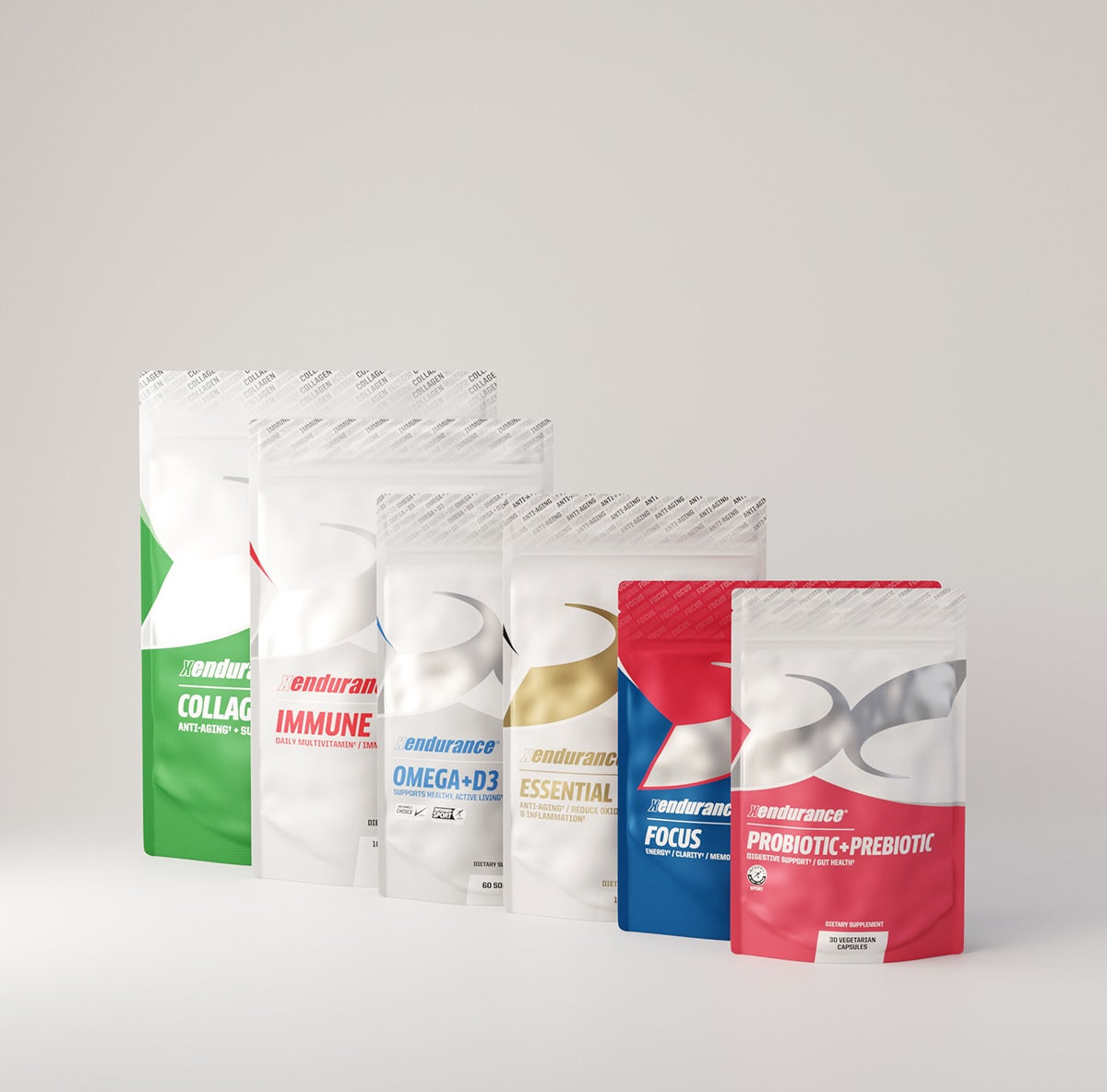The number of people developing type 2 diabetes, especially those under 20, is rising at an alarming rate. This chronic disease has impacted the lives of many, especially since it can lead to other grave health issues if left untreated.
While it's unknown if this condition can be prevented entirely, making some healthy changes can lower your risk of developing it later. But how do you know if you're inching your way to developing Type 2 Diabetes? Read on to learn more about this condition, its risk factors, and the symptoms to look out for.
What Is Type 2 Diabetes?
A recent modeling study has projected an alarming rise in type 2 diabetes cases among younger people in the United States. In particular, the paper says its possible case levels may rise to 220,000 people under 20 with type 2 diabetes in 2060. This is a projected 675% increase in cases compared to the recorded number of people under 20 with the disease in 2017.
Given this staggering projection, the study's authors have called it a wake-up call for people to make changes.
Type 2 diabetes is when the human body fails to regulate and uses sugar or glucose as an energy source. This condition is chronic and causes too much glucose in the bloodstream. These elevated glucose levels can cause further harm and other long-term disorders in multiple organ systems in our bodies.
When a person has type 2 diabetes, two interrelated issues are in place: the pancreas fails to make adequate insulin, and the body cells don’t respond well to the said hormone, thereby using less sugar as fuel.
But how is type 2 diabetes different from type 1?
Type 1 diabetes is when the body can’t produce insulin. Meanwhile, type 2 diabetes is an impediment in which the pancreas can’t produce enough, and the cells start becoming resistant to insulin.
Type 1 was formerly known as juvenile diabetes, while type 2 was formerly called adult-onset diabetes. Although, both diabetes types can happen at any age. Type 2 diabetes is more commonly observed among adults, however.
The Red Flags of Type 2 Diabetes
A lot of risk factors come into play for type 2 diabetes. Some of its risk factors are related to your own genetics, including having a family history of diabetes and your ethnic background (American Indian, Asian, Alaskan Native, Black, Hispanic or Latino, and Pacific Islander). Another possible risk factor, similar to many health issues, is age, as people over 45 have an increased risk of developing this disease.
However, an unhealthy lifestyle and obesity form the biggest chunk of risk factors for developing this impairment. If you’re obese or overweight and living a sedentary lifestyle, your risk of getting type 2 diabetes is elevated.
The Link Between Type 2 Diabetes and Obesity
According to recent studies, obese people are 80 times more at risk of developing diabetes than those with a healthy body mass index. But how can you get diabetes from obesity?
Obesity does so in a couple of ways.
The first way is by causing an inflammatory response. According to research, abdominal fat makes fat cells release “pro-inflammatory” chemicals. This causes the body to become insulin resistant, thereby hampering the function of cells that are supposed to respond to insulin.
The second way is by impeding fat metabolism. Being obese is believed to cause changes in one’s metabolism. Such changes cause adipose or fat tissues to release fat molecules into the bloodstream. The said fat molecules can also disrupt the function of insulin-responsive cells, thereby causing less insulin sensitivity.
Type 2 Diabetes Symptoms and Early Warning Signs
It’s still unknown if this type of diabetes can be fully preventable since some genetic factors are in consideration. However, making healthy changes to your lifestyle can lower your risk exponentially.
If you fear you may have prediabetes or if you’re worried you’ve developed type 2 diabetes, here are the symptoms and early warning signs that you should look out for:
1. Frequent Urination and Increased Thirst
Arguably the most well-known but overlooked warning signs of diabetes are how frequently you become thirsty and how often you need to urinate. Since there's a high glucose level in your bloodstream, your kidneys are hard at work, trying to eliminate the excess sugar by filtering it out of your blood. As such, you may need to go to the bathroom more frequently.
In connection with this, frequent urination causes the body to lose more water. As such, your body would signal the need to hydrate, making you feel more thirsty than usual.
2. Fatigue
Having type 2 diabetes can cause fatigue as the condition can have a significant impact on one’s energy levels. This is due to insufficient glucose being used as fuel by the body.
3. Having Blurry Vision
Excess blood sugar can damage small blood vessels in the eyes. It can also cause the lens of our eyes to swell. These two factors may cause a person with diabetes to have blurry vision.
If diabetes goes uncontrolled or untreated, it can cause greater damage to a person’s vision.
4. Wounds Heal Slowly
Similar to what happens with the blood vessels in the eyes, high sugar levels cause damage to blood vessels in the entire body. This condition also causes damage to nerves. Given these two factors, a person with diabetes may have impaired blood circulation, resulting in wounds taking weeks or months to heal. This also poses a greater risk of infection.
5. Tingling or Numbness in Limbs
Since high blood glucose levels can both damage the nerves and hamper healthy blood circulation, it’s common for those with diabetes to feel numbness or tingling in their limbs, more commonly in the hands and feet.
6. Dark Skin Patches
Diabetes can cause a person’s skin to darken in some areas. Known as acanthosis nigricans, someone with type 2 diabetes may find darker skin on their neck, armpits, or groin area.
7. Yeast Infections
Since your body is trying to filter out sugar, this excess glucose comes from your body via the urine. The glucose in your urine becomes food for yeast, which may lead to yeast infections or itchiness. Such infections are more likely to occur in warm and moist areas of the body, including the armpit, mouth, and genitals.
How to Manage Type 2 Diabetes
Unlike Type 1 diabetes, where you’ll need insulin medication from the beginning, diabetes treatment for Type 2 is different, especially when caught early on.
If you have Type 2 diabetes, more so if it's caught early, lifestyle and diet changes to help your body deal with glucose properly can greatly help in managing or controlling diabetes.
To effectively do this, you'd need to develop habits that can improve your overall fitness and health. While you can do this independently, having guided programs such as XND63 can significantly improve the likeliness of these new healthy habits in the long run. This program will guide individuals to create new healthy habits, including diet, exercise, and supplementation, within 63 days.
With a lifestyle change, there are medications that your physician may prescribe to help your body manage diabetes. Some of these include metformin and sulfonylureas, among others.
Forming Healthy Habits
Diabetes is a disease that affects many lives worldwide. In fact, according to the International Diabetes Federation, 537 million adults across the world were living with this condition in 2021. In the United States alone, the CDC says around 1 in 10 Americans are living with diabetes, with 90-95% having type 2 diabetes. While this is not a curable disease, it's a manageable one.
Forming healthy habits and making diet and lifestyle changes for the better help lower your risk of developing a myriad of diseases and health issues, including Type 2 Diabetes. Start adopting healthier habits today and make lifestyle changes that can help improve your fitness and quality of life today!









Leave a comment
This site is protected by hCaptcha and the hCaptcha Privacy Policy and Terms of Service apply.